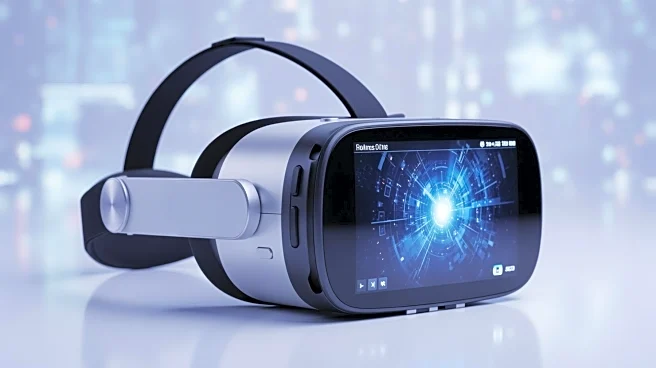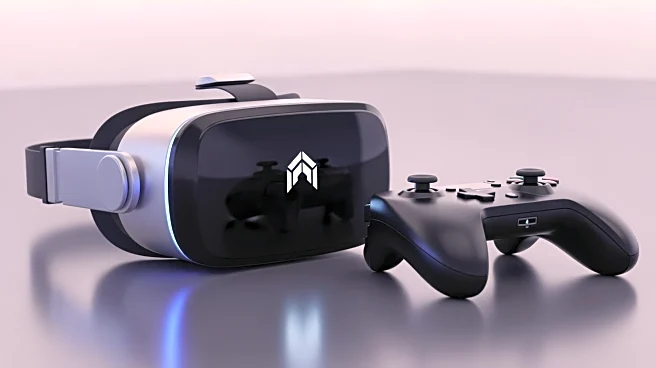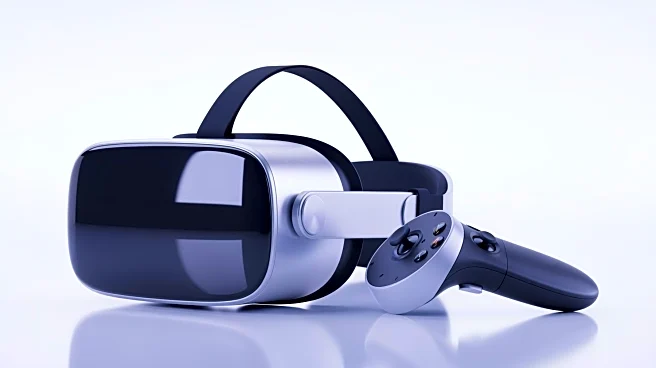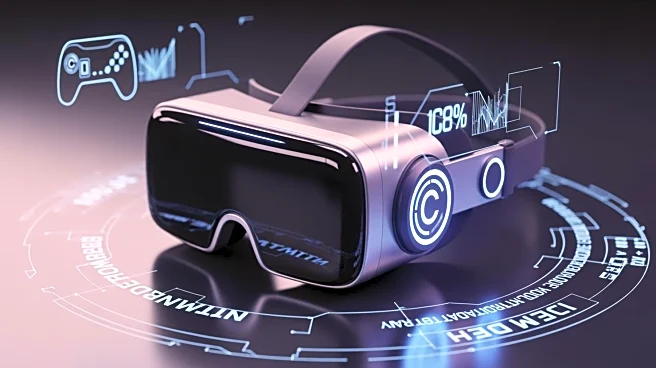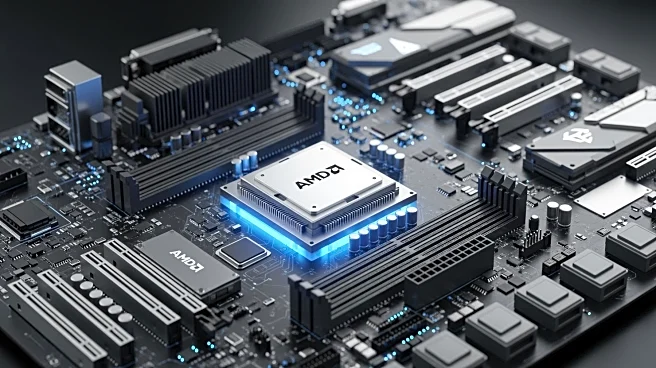What's Happening?
Valve has announced its latest virtual reality headset, the Steam Frame, which marks a significant advancement from its predecessor, the Valve Index. The Steam Frame can function as a standalone VR headset, eliminating
the need for cables when streaming games from a PC. This new device is equipped with advanced features such as a 4nm Snapdragon 8 Gen 3 ARM64 processor, 16GB of LPDDR5X RAM, and Wi-Fi 7 capabilities. It offers storage options of 256GB and 1TB, with additional storage available via a microSD card slot. The headset boasts pancake optics with a resolution of 2160 x 2160 per eye and a refresh rate of up to 144Hz. Valve has not announced a release date or price for the Steam Frame, nor has it revealed any new games to showcase the hardware.
Why It's Important?
The introduction of the Steam Frame VR headset represents a significant step forward in virtual reality technology, offering users greater flexibility and enhanced performance. By allowing standalone operation, Valve is addressing a key limitation of previous VR systems, potentially broadening the appeal of VR gaming. This development could impact the gaming industry by setting new standards for VR hardware, encouraging competitors to innovate further. The absence of new software announcements suggests Valve is focusing on hardware advancements, which may influence the direction of VR content development. The Steam Frame's advanced features could attract tech-savvy consumers and gamers looking for cutting-edge experiences.
What's Next?
Valve's announcement of the Steam Frame is part of a broader hardware strategy, including the development of a next-gen Steam Machine and Steam Controller. As Valve continues to innovate, the gaming community and industry stakeholders will be watching closely for further details on pricing and availability. The success of the Steam Frame could influence future VR headset designs and the development of VR content. Stakeholders such as game developers and tech companies may respond by accelerating their own VR initiatives to compete with Valve's offerings.
Beyond the Headlines
The Steam Frame's standalone capabilities could have broader implications for the accessibility and adoption of VR technology. By reducing reliance on external hardware, Valve is making VR more user-friendly, which could lead to increased adoption in non-gaming sectors such as education and training. The focus on hardware over software may also signal a shift in Valve's strategy, prioritizing technological innovation over content creation. This could lead to collaborations with third-party developers to expand the VR ecosystem.
